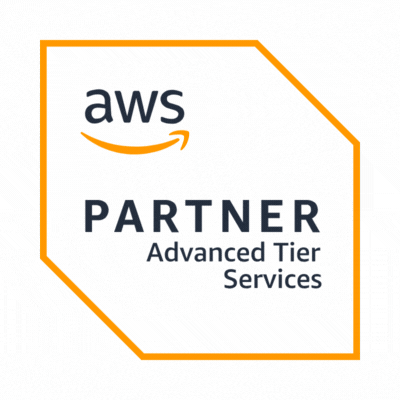
Migrating from on-premise infrastructure to the cloud is no longer just a technology shift—it’s a strategic leap. In today’s dynamic business environment, agility, scalability, and innovation determine competitiveness. And cloud platforms are at the core of that transformation.
According to IDC, 55% of the G2000 will adopt multicloud data management strategies to optimize costs, reduce vendor dependencies, and enhance data resilience.
This guide explores the full journey of on-premise to cloud migration, blending business rationale, technical execution, and operational best practices into a unified blueprint for modern enterprises.
Understanding on-premise vs cloud environments
Before any cloud migration begins, it’s critical to understand what you're moving from and what you're moving toward. On-premise and cloud environments are fundamentally different in terms of architecture, ownership, cost structure, and operational responsibilities.
On-premise infrastructure
In traditional setups, companies manage physical servers, networking equipment, and storage systems within their own facilities. While this offers full control, it introduces high capital expenditures, energy costs, limited scalability, and increased maintenance burdens.
Cloud infrastructure
Cloud environments, such as AWS, provide pay-as-you-go scalability, global reach, built-in redundancy, and faster innovation cycles. Security, uptime, and performance are backed by enterprise-grade SLAs and multi-layered architectures.
Comparing cost, scale, and access

Want a deeper dive? Explore the differences in data migration strategies to the cloud.
Benefits of cloud migration that transform operations
Migrating to the cloud isn’t just an infrastructure upgrade—it reshapes how your business operates.
- Agility and speed
Launch environments in minutes, iterate faster, and respond to market changes in real time. - Cost-efficiency
Shift from capital-intensive hardware to operational efficiency, reducing total cost of ownership by 30–50%. - Performance and innovation
Leverage advanced services such as containerized applications on AWS, AI, and machine learning with zero infrastructure complexity. - Security at scale
Benefit from a multi-layered cloud security approach with compliance frameworks baked in. - Global collaboration
Enable secure remote access and collaboration across geographies, supporting hybrid and mobile teams.
Common challenges—and how to overcome them
Despite the advantages, cloud migration comes with complexity. Recognizing and planning for these challenges ensures a smoother transition.
1. Data security and privacy
Migration opens new risk surfaces. Encrypt data in transit and at rest, enforce access controls, and use secure tooling. Learn more in our guide on data security best practices.
2. Downtime and business continuity
Design rollback plans and phased migrations to minimize disruption. AWS Migration Tools support near-zero downtime transitions.
3. Cloud skill gaps
Upskill internal teams early. Consider certifications and partner with migration experts to accelerate knowledge transfer.

Your 7-step strategy to migrate on-premise infrastructure to the cloud
A structured migration approach protects business continuity and unlocks full cloud potential.
- Assess your current infrastructure
Inventory applications, databases, and systems. Identify workloads suitable for rehosting, refactoring, or retiring. - Define your cloud strategy
Choose between public, private, or hybrid models. Consider scalability, compliance, and cost factors. Align with your business processes using this AWS-aligned cloud migration framework. - Plan the migration in phases
Prioritize low-risk workloads first. Use the 6Rs of migration—Rehost, Replatform, Repurchase, Refactor, Retire, Retain—to map your journey. - Secure your environment end-to-end
Ensure data encryption, MFA, IAM policies, and regulatory alignment. - Leverage proven migration tools
Tools like AWS DataSync and Migration Hub reduce complexity and ensure visibility across every phase. - Validate functionality post-migration
Test application behavior, performance baselines, and compliance controls in the cloud environment. - Optimize for scale and performance
Implement observability tools, cost governance (FinOps), and auto-scaling capabilities. See how to continuously improve in our full AWS Cloud Migration overview.
Securing your cloud migration from end to end
Security must be woven into every phase of the migration.
Pre-migration
- Classify sensitive data
- Set access controls
- Prepare encryption keys
During migration
- Use secure, encrypted channels
- Monitor for anomalies
- Enforce multi-factor authentication
Post-migration
- Revalidate data integrity
- Implement cloud-native security policies
- Set up continuous threat monitoring and logging
Read more about Securing your cloud environment.
Hybrid cloud as a stepping stone, not a compromise
For many enterprises, hybrid models offer a practical path. They allow:
- Gradual migration of critical workloads
- Integration with legacy systems
- Cloud-first innovation without full disruption
Hybrid is not a halfway strategy—it’s a bridge that blends stability with future readiness.
Measuring success with the right KPIs
Cloud migration success isn’t about checking boxes—it’s about measurable outcomes.

Best practices to future-proof your migration
A successful migration doesn’t end once your workloads land in the cloud. The real value lies in how well your cloud environment evolves with your business. Future-proofing your migration means putting in place the right foundations—from automation and security to skills and governance—that ensure long-term agility, resilience, and ROI.
- Start small and iterate
Test with non-critical apps to refine your playbook. - Automate wherever possible
Use infrastructure-as-code, CI/CD pipelines, and auto-scaling policies. - Train your teams
Encourage certifications and create cloud champions internally. - Engage stakeholders throughout
Migration is as much about change management as it is about technology. - Plan beyond go-live
Post-migration optimization is where long-term value is captured.
Cloud isn’t a destination—it’s your foundation
On-premise to cloud migration is more than a project. It’s a business decision that redefines how you innovate, serve customers, and respond to change.
With the right plan, tools, and mindset, your cloud migration can unlock a more agile, secure, and competitive future.
Ready to start your cloud journey?
Let’s transform your infrastructure and unlock the full potential of the cloud—book a consultation with our cloud experts today.


















